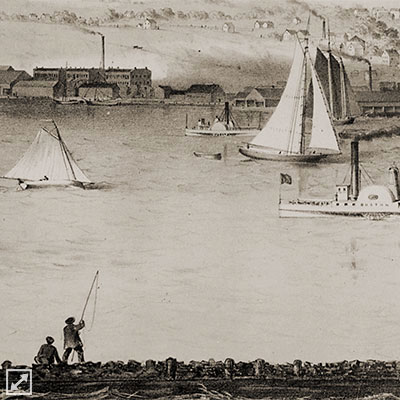Landscape Lenses
Cultural Landscape : Early Settlement

Burlington from the waterfront, 1858
Many of the cultural landscape features you see today in Vermont are from this historic era. The first European to visit Vermont, Samuel de Champlain arrived in 1609. However, it was not until the mid-1700's that Europeans came to settle. Most of them came from the south and migrated up through the Champlain Valley. This was a period that saw frequent military and political clashes between the French in the north and the British in the south.
Population data for the State of Vermont was first collected in 1790, listing 330 residents in Burlington. In 40 years, the city's population grew by more than tenfold when the 1830 census count recorded 3,526 residents. In just 40 more years, that number rose dramatically to 13,576, according to the 1870 census.
When Europeans first arrived in Vermont, they came to an almost entirely forested landscape. Over several generations, these farming people transformed it dramatically into a land virtually cleared of trees. This enormous landscape change is the underlying framework of most of the cultural landscape we see today. The landscape continued to evolve and is still evolving today, but throughout the state we can see vestiges of all the eras in European use of the land.
Burlington has grown and changed much over the last several years. Explore the Focal Places of this website to learn more about how people occupied Burlington during this early settlement period.